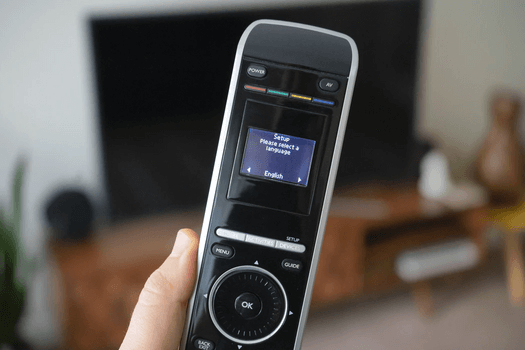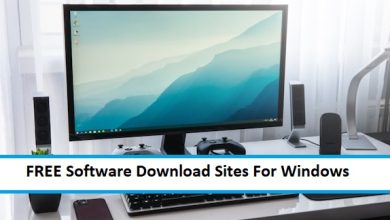Technologies and Design of Healthcare Mobile Applications

When many people think of healthcare mobile applications, they may know that well-known healthcare app developers have been involved with their development. However, knowing that such software exists and understanding what it does are two very different things. Regardless of whether they are healthcare professionals are patients, users benefit from a broad range of features.
Read on to learn more about these features and what to expect from how they work. These applications are shaping the way that medical software works in new ways. You will be able to find out what matters the most when these applications are in the developmental phase.
What is the healthcare software industry?
The healthcare software industry deals with software development, including mobile applications, used in the healthcare industry. Research and Markets estimates this industry as being worth $32 billion. One thing that anyone following this industry will realize is that the growth potential is high.
One of the end goals of effective software is improving patient experience. Another goal is to give healthcare providers the tools they need to handle patient needs that may change rapidly more efficiently. The most effective software will be able to build a bridge between patient and provider needs.
Types of healthcare apps
There are many types of healthcare apps currently on the market for the patient and provider needs. One of the benefits of these apps is that many of them can support both parties’ needs. Some of the examples include apps specific to facilities, applications geared towards outpatient care, physician directory and referral apps, medication and condition tracking apps, and wellness software.
Facility apps and portals provide helpful information about hospitals, urgent care facilities, and the physicians affiliated with the facilities. Outpatient care is another type of popular application, with possibilities ranging from cancer care to physical or occupational therapy. An advantage of this type of software is that patients and medical staff can interact much more quickly.
Physician directory and referral software help provide patients with an easy way of researching doctors and assisting current physicians in making referrals. When patients can learn more about a doctor’s qualifications or reputation, they will feel as though they are more in charge of their care. Easier referrals can help patients who might be relocating or physicians in areas with fewer specialists to refer patients with special medical needs for further treatment.
Patients often benefit from tracking their medications and vitals and sharing these stats with their doctors. In patients with conditions such as diabetes or heart disease, medicine and vitals tracking enable patients to manage these conditions better. Physicians often find it easier to determine the right course of action with a better knowledge of their patients’ stats.
Wellness software, which has grown in demand over the years with an average 7% rate according to Grandview Research, allows patients to manage their overall health much more easily. Many of the top wellness programs have been offered by companies for employee use. These types of programs may be used in tandem with applications from healthcare providers for greater efficiency.
Key features for making the perfect healthcare mobile app
There are several types of features that app developers need to consider to increase the chances of their software’s success. Telemedicine and video conferencing became more essential during the 2020 COVID-19 pandemic. Patients who found these features convenient because of the circumstances are likely to keep using those features.
User profiles and dashboard features need to be easily accessible for the patients and their doctors. One of the types of features that makes things easier for patients and providers is an e-prescription feature, allowing patients to get their medications filled faster. Software with these features may also include options that ensure easier access to Patient Assistance Programs often used for expensive prescriptions.
A booking feature can help new and established patients set up appointments faster. Office staff will be able to spend less time setting up appointments. When patients may book an appointment through an app feature, they may be more likely to use that provider for their health needs.
Patients often benefit from features that allow them to access their medical records, as well as symptom checkers. Quicker medical records access may save time when visiting a new provider unfamiliar with the patient’s history. While not a substitute for seeing a doctor, a symptom checker may help give patients an idea of what type of medical condition they are facing.
Connections to wearable devices make it easier for patients to track their vitals and let their medical providers know about any noteworthy changes. A wearable device connection may encourage some patients to keep up with a fitness routine. In the case of patients with abnormalities in their heart rate or blood pressure levels, a doctor might be able to spot problems sooner and allow for more prompt treatment.
The ability to add custom notifications and reminders keeps everything as hassle-free for everyone as possible. Many patients are more likely to comply with doctors’ orders when they receive reminders about upcoming appointments and tests. Notifications also provide an alternative to emails and phone calls to reach out to patients or providers.
AI integration allows users to take advantage of the latest technology, customized to meet their needs. VR-based features serve as a valuable extension of the technology currently in demand for telemedicine and similar features designed to help users perform more tasks remotely. API integration for third-party solutions allows developers to expand the software’s capabilities without spending additional time during the process.
With an increase in the popularity of blockchain, integration with medical apps has grown in demand. Patient privacy and compliance with related laws are crucial issues that must be taken into consideration. Lastly, developers need to make sure the user interface design is suitable for users of all experience levels.
Mobile App Architecture
Android and iOS apps have one major thing in common, which is that the components are well-built. For the app to work as well as expected, developers need to address problems promptly. The most successful apps on the market have had developers who knew how to overcome these challenges.
The easiest way to describe an app’s architecture is a framework or foundation that sets the bar for all the other elements that are a part of the application’s design. All of the components need to work together to ensure the best results. Companies with well-designed software will enjoy reduced costs, as well as time.
Any source code used to develop software, regardless of the platform, should be easy for everyone involved in the project to understand. When a team of multiple people, possibly in different locations, is involved, understandability makes the process go much more smoothly. The better the architecture’s quality, the sooner everyone in on the project can get to work.
The developer team needs to be able to test the app and its elements easily. The fewer errors, the more reliable the app will be once it reaches the market. When users experience more occasional frustrations using the program, its popularity will be more likely to increase.
An app needs to be scalable, as well as allow for extensibility. When the app is scalable, team members can efficiently work on different aspects concurrently. One of the advantages that come with extensibility is being able to add the maximum number of necessary functions.
Application architecture that works well also needs to be flexible, allowing for easy changes when necessary. Changing an element should ideally end up being error-free. The fewer errors that team members need to think about, the less likely errors will end up derailing the entire process.
The completed app needs maximum efficiency in all settings to perform as needed. When software is reliable under challenging circumstances, there is less frustration involved for users. Well-designed apps easily handle any load demand, a feature that is necessary in a rapidly-expanding market.
Conclusion
Many people are unaware of the vital role that application architecture plays in a program’s success. Every time a patient or provider successfully uses mobile medical software, they have developers’ hard work to thank. An understanding of the features essential to making these programs work will help consumers appreciate their value.
As healthcare mobile applications continue to play such a large role in the software market, there will be a greater demand for new and better features. Developers involved in creating new applications or upgrading existing programs benefit from knowing what is essential to the success of an app.




